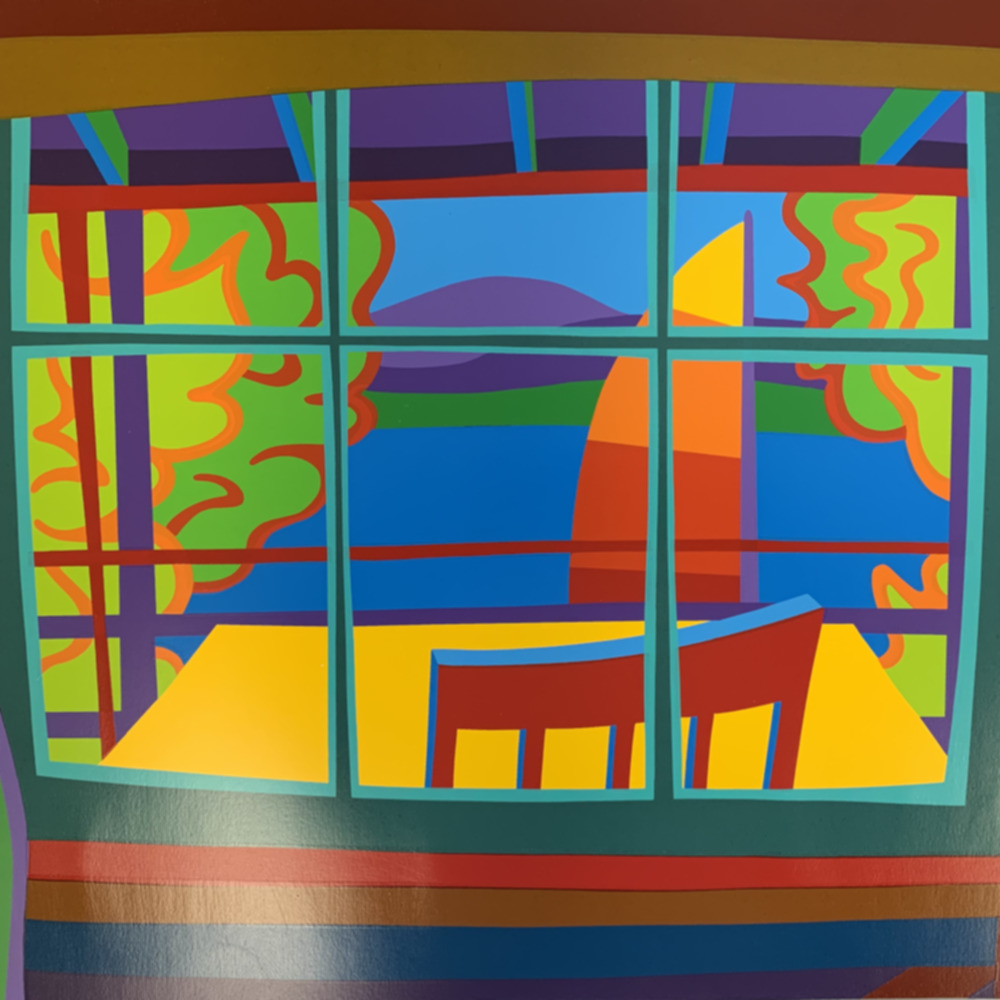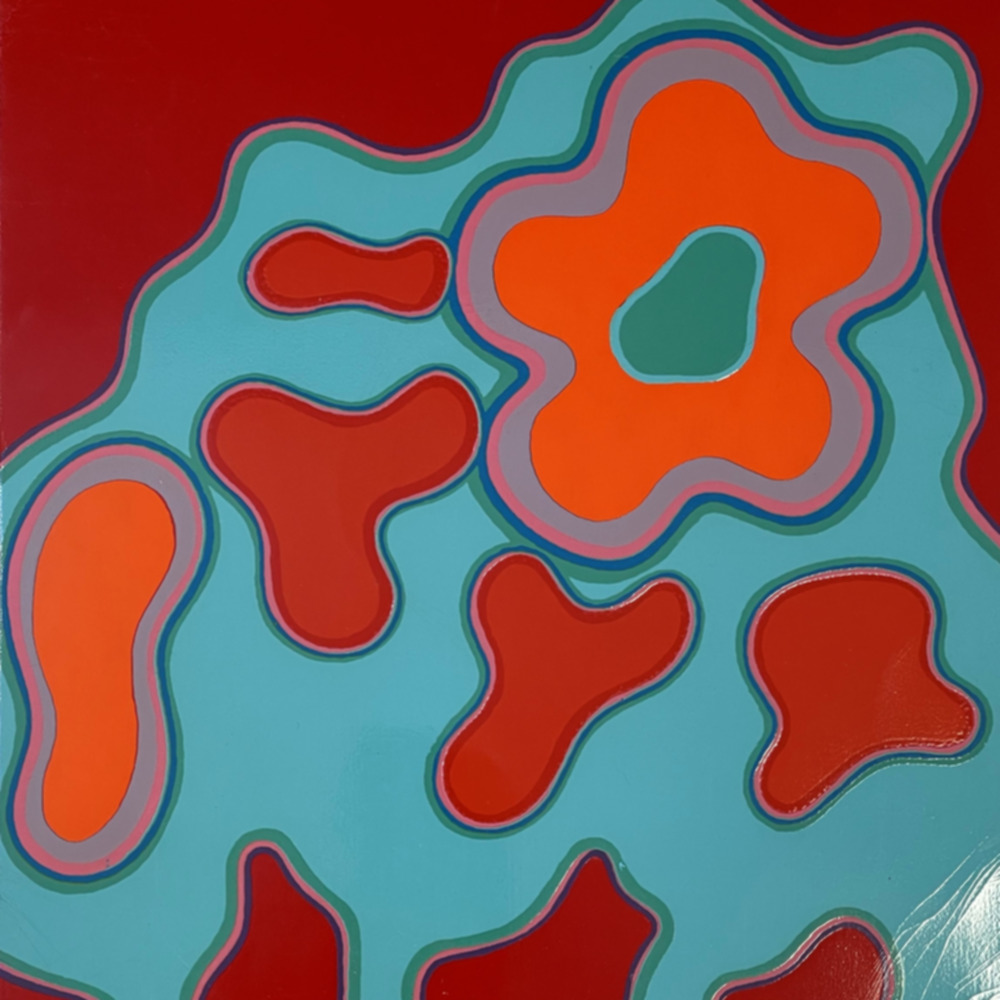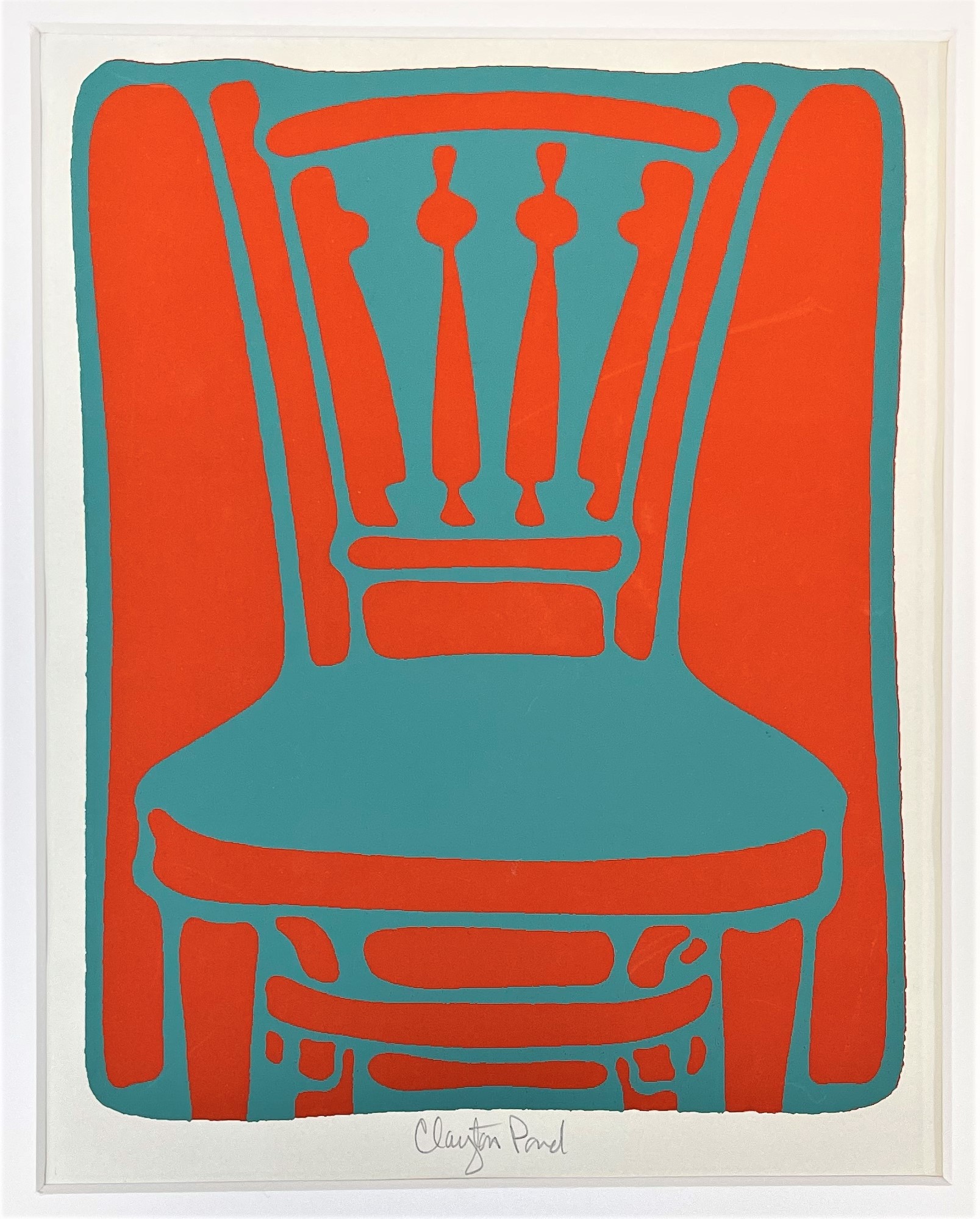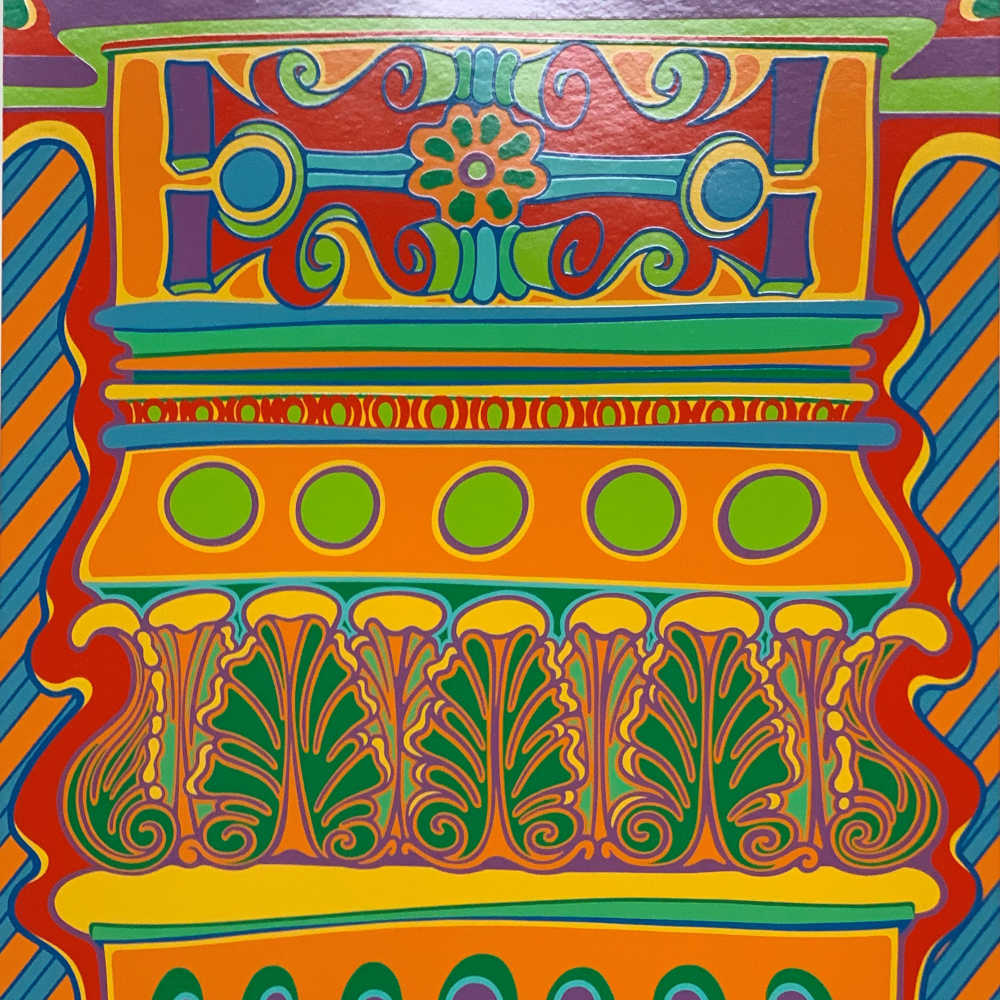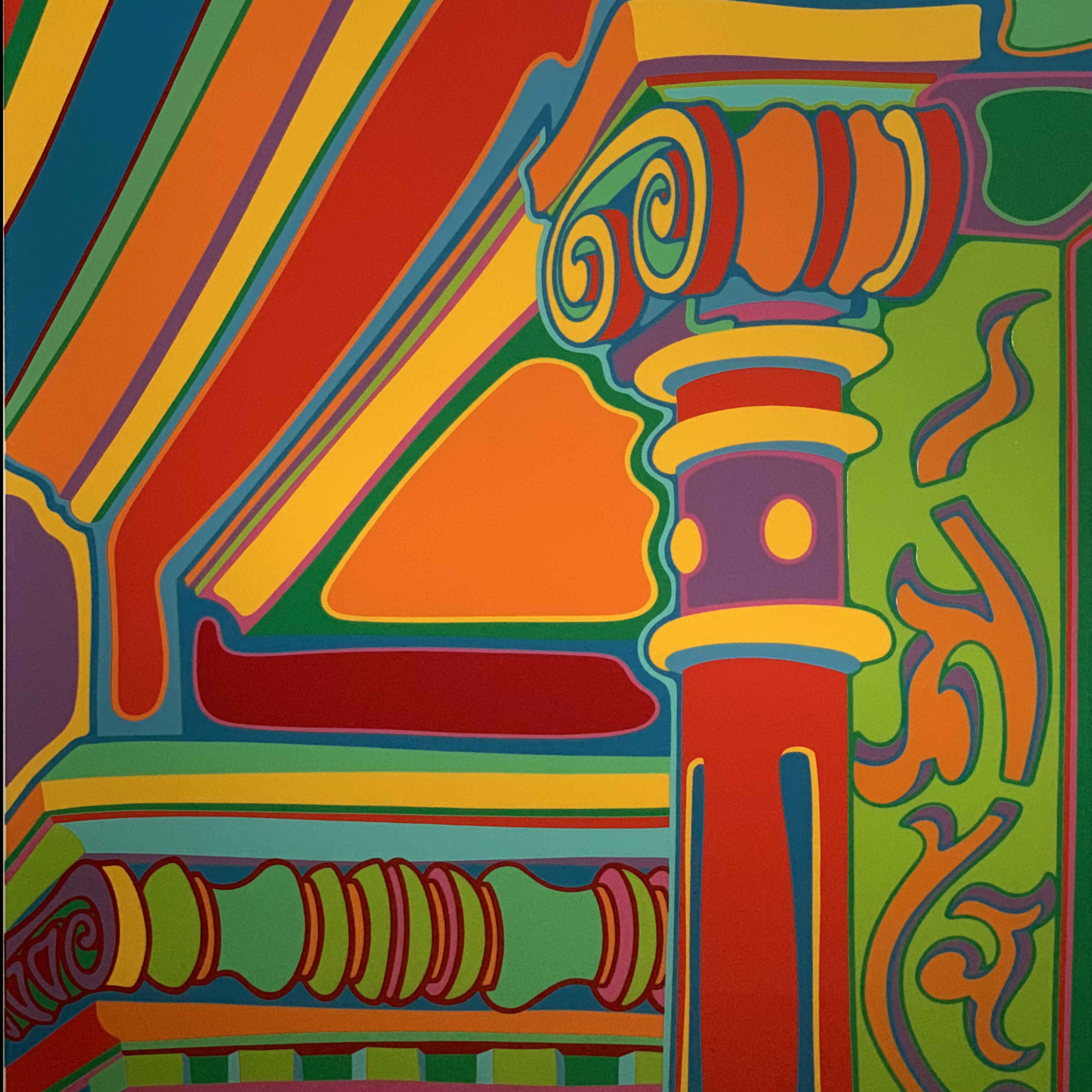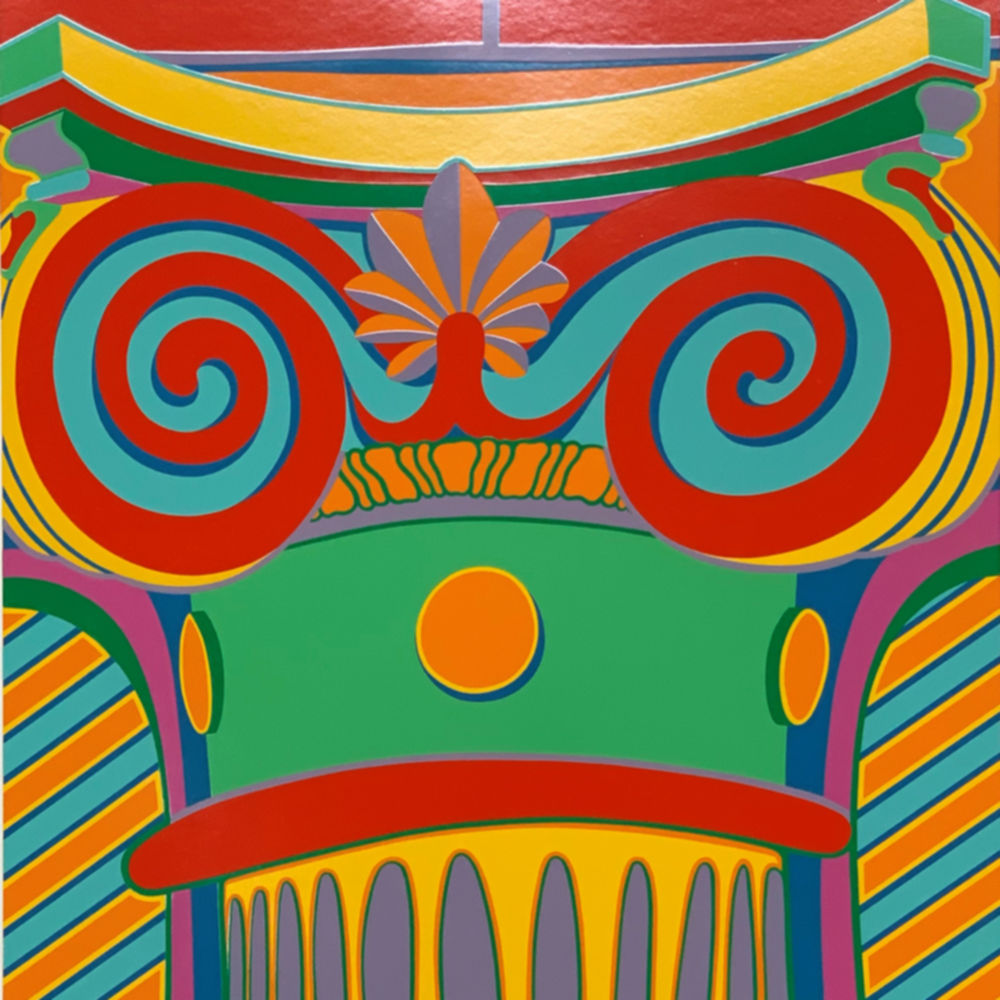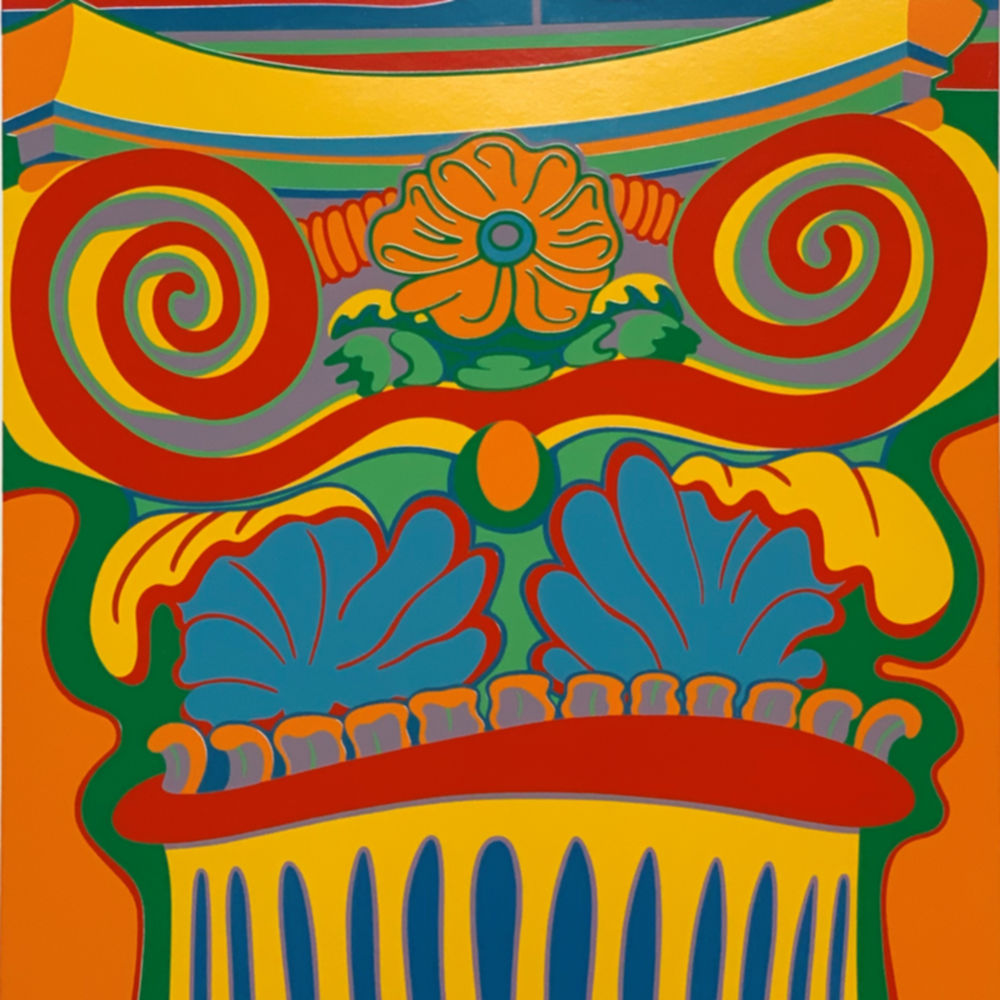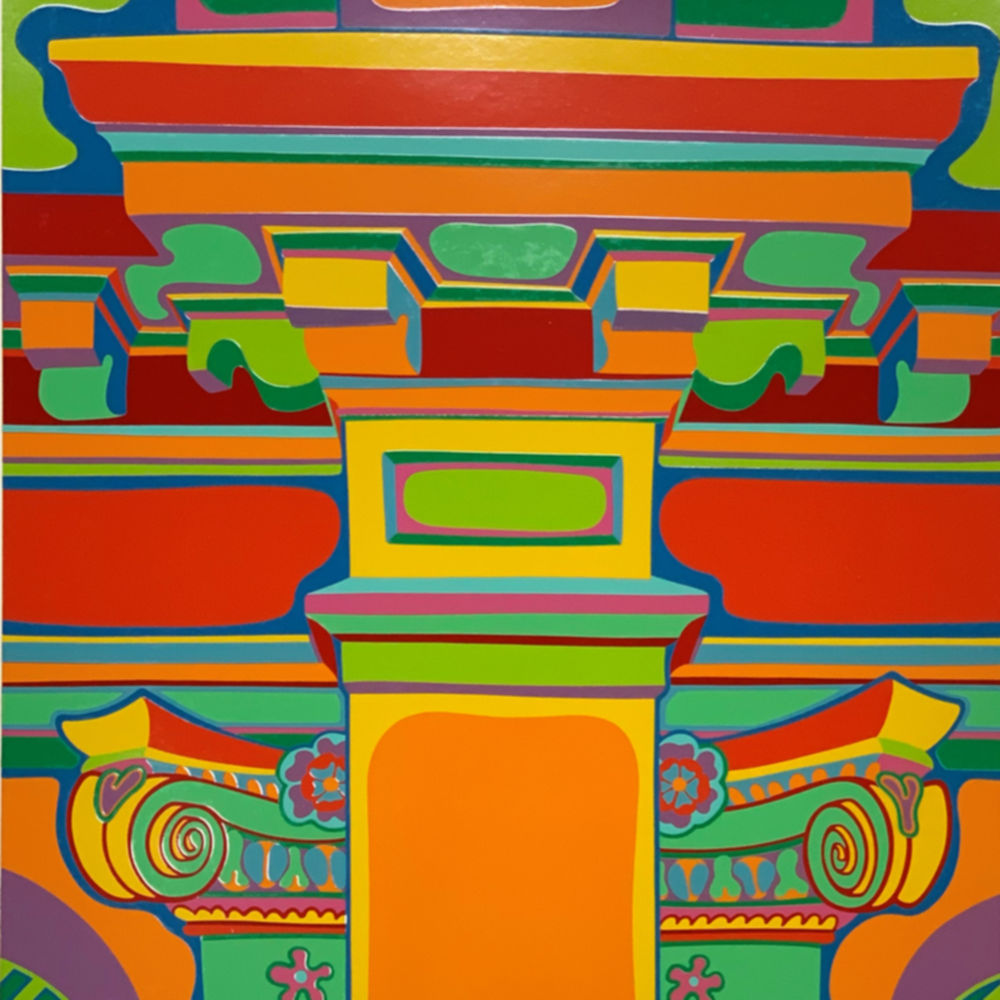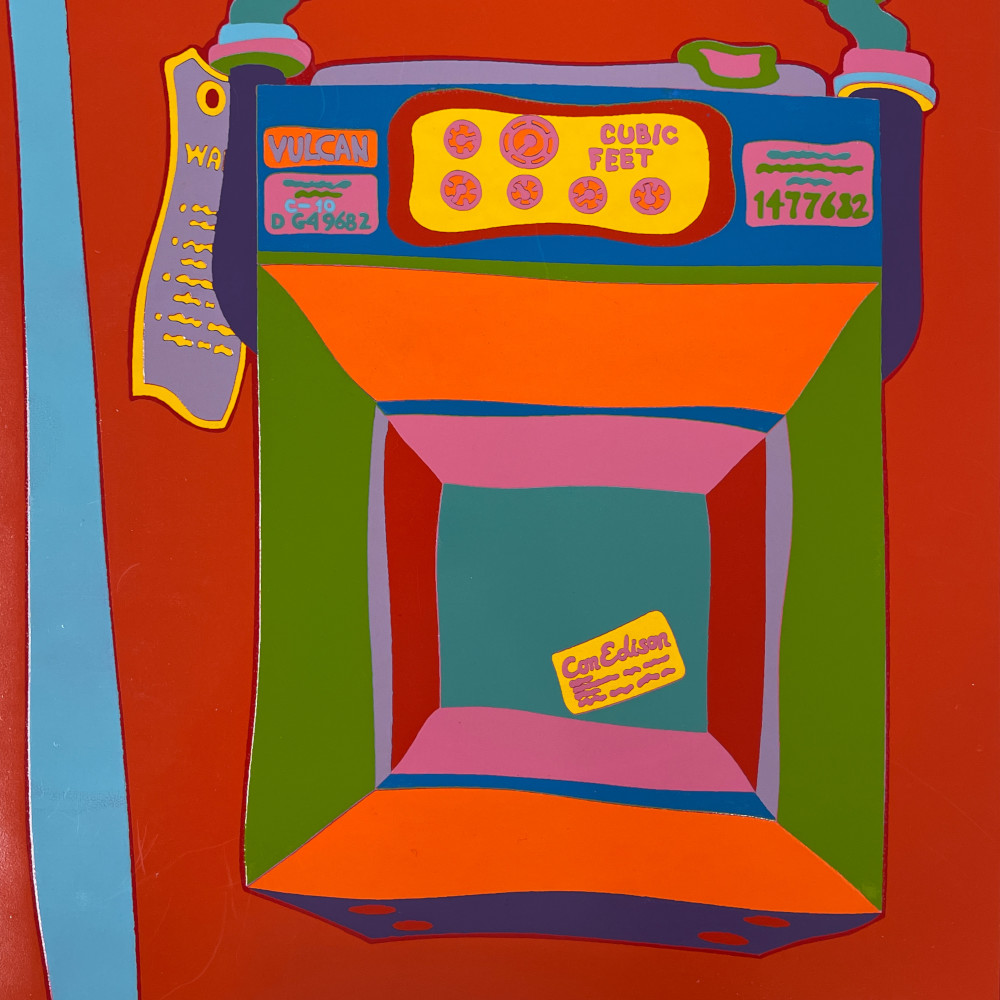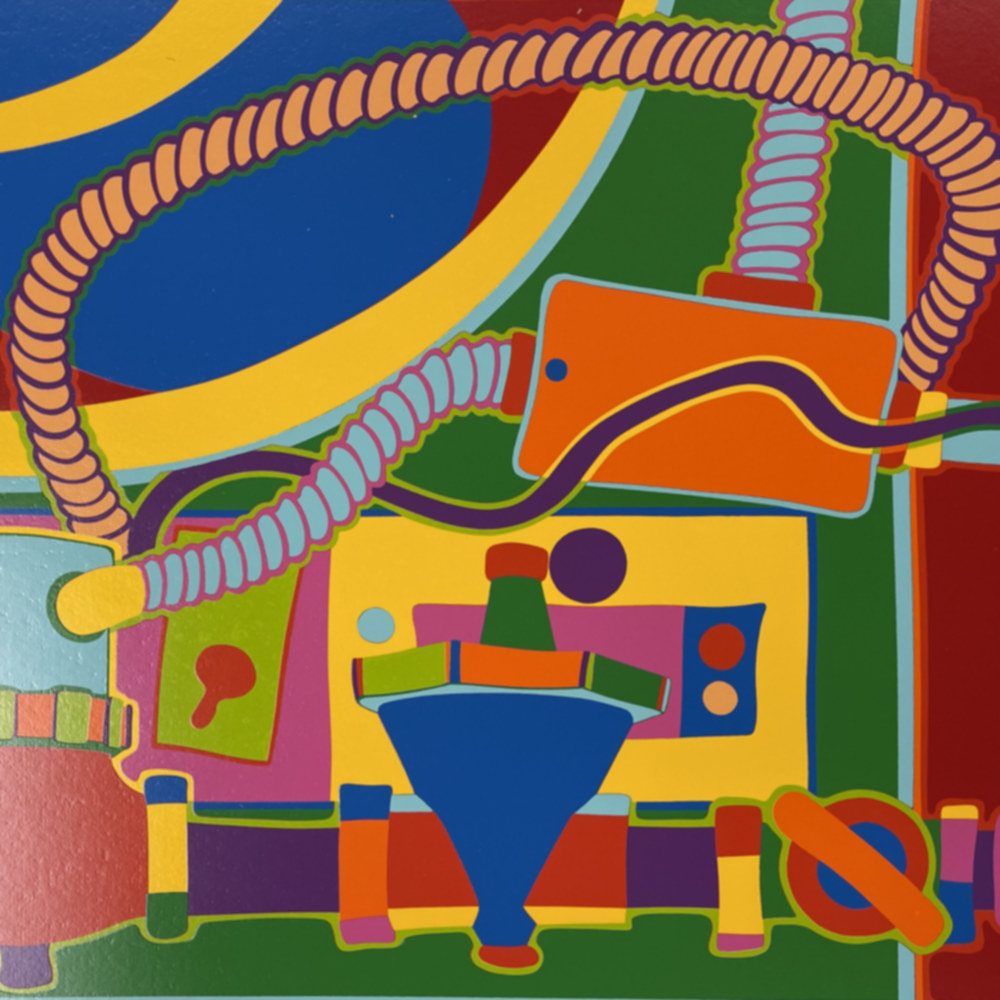Clayton Pond received early recognition in the 1960s and 1970s for the major innovation to serigraphy that he devised.
Serigraphs (usually referred to as “silkscreens”) generally have a very flat finish. Before the 1960s, silkscreens were exclusively utilitarian, used for advertising and notices. But Pond developed a reductive process of layering the colors, requiring very tight registration, color upon color, starting with a wide-open stencil, then reducing the open area for each subsequent color. He would then coat his prints with varnish. The varnish added a uniform glossy surface that enhanced the intensity of the color. The varnish also protected the colors from scuff marks and the fading resulting from oxidization. His prints were unique because they had up to twenty very bright and shiny colors and very sharp registration. The colors looked as if the ink was still wet, and the prints had a topographically varied surface created by the thickness of the ink layers.
Pond’s work is largely concerned with color and structure, with a big dose of humor in the mix.
Pond earned a BFA from Carnegie Mellon and an MFA from the Pratt Institute.
His work is in the permanent collections at MOMA, the Art Institute of Chicago, the Yale University Art Gallery, the Smithsonian Institution, the National Air and Space Museum, the National Gallery of Art, and many other important museums.
